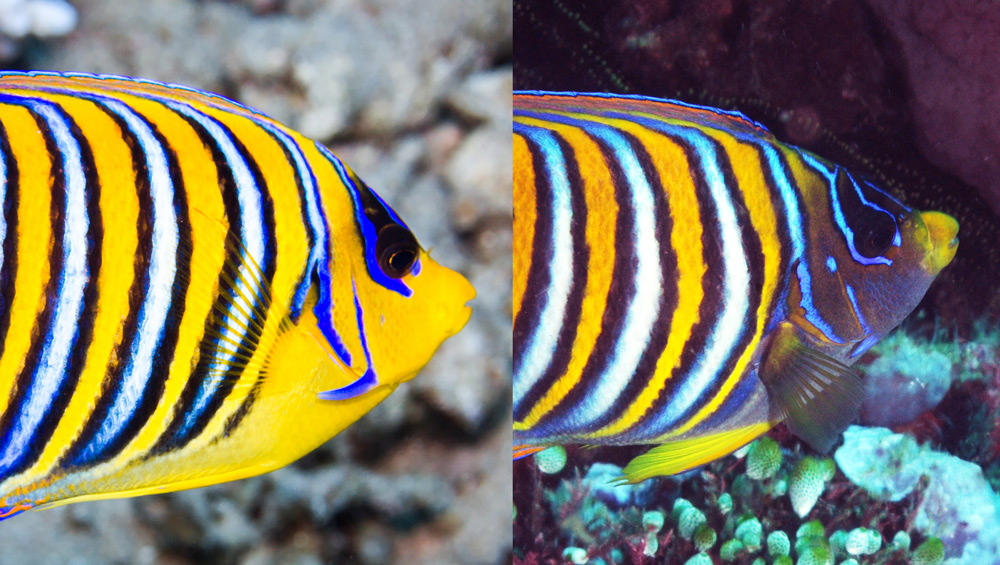Subspecies seem to be rarely used in marine and reef fish but the monotypic genus Pygoplites is fixing to be one of the first angelfish species to receive this designation. We’ve long been aware that Indian Ocean and Indo-Pacific regal angelfish look quite difference, and a recent study reveals that the differences in Pygoplites are more than skin deep.
The regal angelfish, Pygoplites diacanthus is one of the most beloved marine and reef aquarium fish. This species ranges from Red Sea and the east coast of Africa, all across the Indian Ocean, Indo-Pacific, and throughout much of the Pacific Ocean.

Over this extremely wide distribution, divers and aquarists alike have noticed some pronounced differences in the appearance of the regal angelfish. Most notably, we’ve long since known that Pacific Ocean Pygoplites have a grey colored chest and face, meanwhile specimens from the Indian Ocean and Red Sea have a bright yellow base color to their face and chest.
Now a new study to resolve the evolutionary origin of the genus Pygoplites has seen fit to bestow subspecies level designation to each of these different forms of the regal angelfish. Red Sea and Indian Ocean regal angelfish will belong to the ‘flavescens’ subspecies, Pygoplites diacanthus flavescens, and the Pacific Ocean subspecies will be known as Pygoplites diacanthus diacanthus.

Although there is currently only one full species of regal angelfish, the genus Pygoplites has a deep evolutionary history that stretches back over two million years. While subspecies designations may be rare, interestingly it is not that uncommon for sister species with representatives in the both the Red Sea and Indian Ocean, or in the Indian Ocean and the Indo-Pacific.
In angelfish you can see a species level differences between the cream and yellow ear angelfish, with Apolemichthys xanthurus in the Indian Ocean having only minor differences from the Red Sea endemic A. xanthotis. Likewise, the Indian Ocean Genicanthus caudovitattus having a quite similar appearance to the Indo-Pacific G. melanospilos.

Another extremely widespread marine angelfish with a trans Indo-Pacific distribution is the emperor angelfish which also shows clear differences in appearance between Indian Ocean and Pacific Ocean forms. Perhaps further investigation into different populations of Pomacanthus imperator will also reveal a deeper genetic divide which could also lead to subspecies designation, but for now the regal angelfish is the lucky one.
Details of the investigation into the evolutionary history and genetics of the regal angelfish are published by Coleman et. al. 2016 in the Journal of Molecular Phylogenetics and Evolution.




